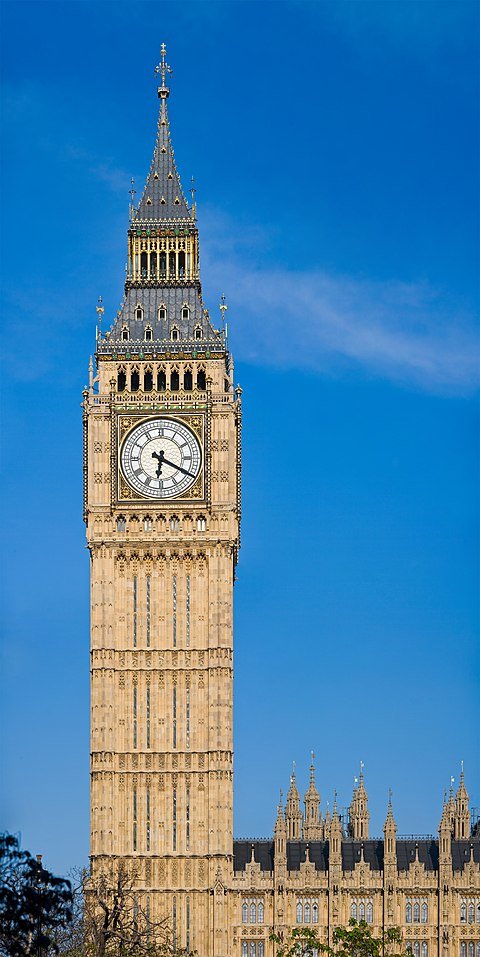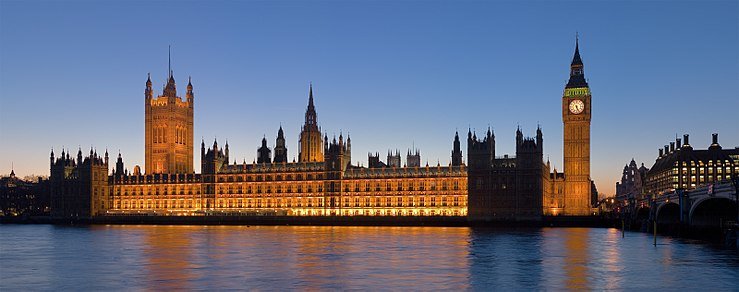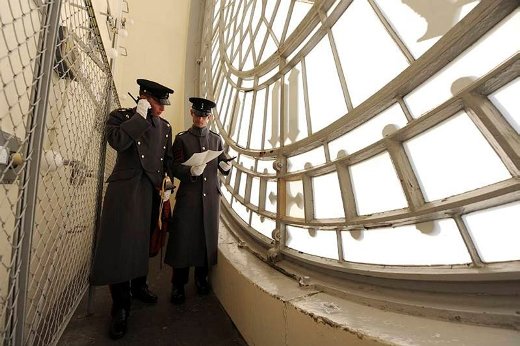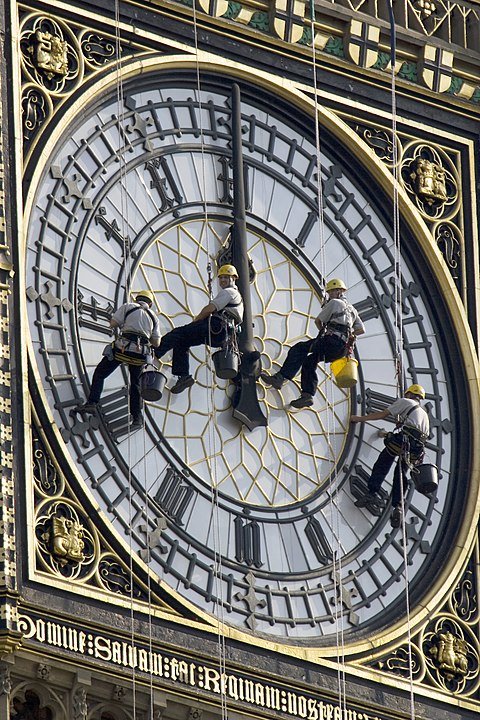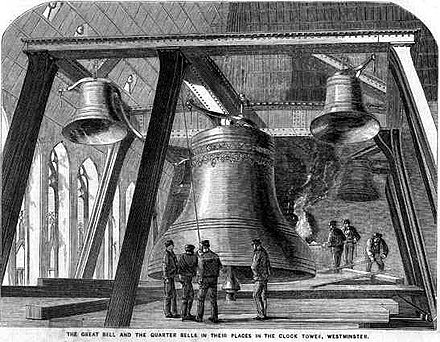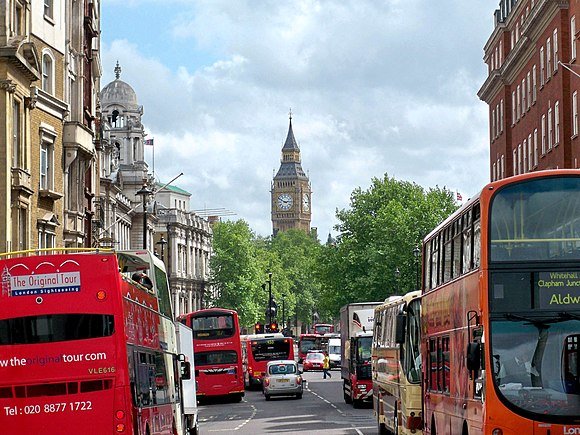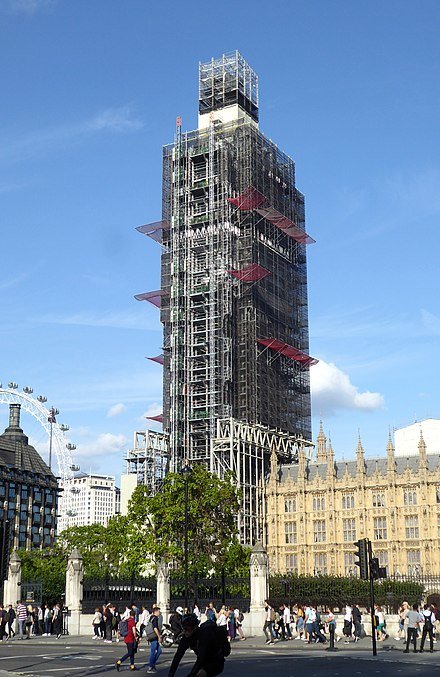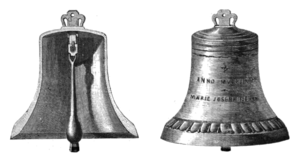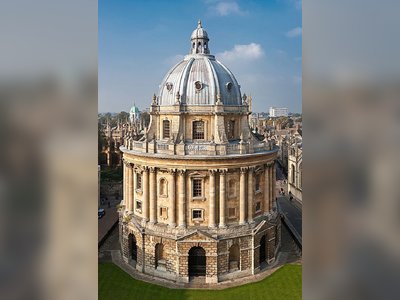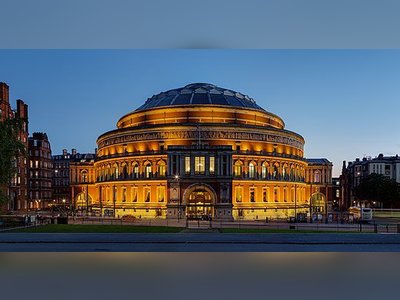British Heritage
Remember, Cherish, Learn.
beta
Big Ben
Contribution of Big Ben to British Heritage.
Big Ben, also known as the Great Bell, is an iconic symbol of British heritage and culture. Located at the north end of the Palace of Westminster in London, England, it holds significant historical and cultural value for the United Kingdom. The tower, originally named the Clock Tower, was designed by Augustus Pugin in a neo-Gothic style and constructed as part of Charles Barry's design for the new Palace of Westminster after the old one was destroyed by fire in 1834.
Completed in 1859, Big Ben's clock was the largest and most accurate four-faced striking and chiming clock in the world at that time. Its impressive height of 316 feet (96 m) and distinctive design make it one of the most recognizable landmarks in the United Kingdom. The tower's base is square, measuring 40 feet (12 m) on each side, and the dials of the clock are 22.5 feet (6.9 m) in diameter. Notably, the clock tower features shields representing all four nations of the UK: a rose for England, thistle for Scotland, shamrock for Northern Ireland, and leek for Wales.
Big Ben's legacy lies not only in its architectural and engineering significance but also in its cultural impact. As a British cultural icon, it represents the values of parliamentary democracy and stands as a symbol of the nation's history and traditions. Its image has been widely used in various forms of media, making it a prominent feature in films, television shows, and photographs depicting London.
Big Ben's significance extends beyond its architectural and cultural contributions. It serves as the official timekeeper of the United Kingdom and has played a vital role in the nation's history. The clock's reliability and accuracy have been crucial for various events, including the marking of New Year's Eve, Remembrance Sunday, and the start of the Olympic Games.
Moreover, Big Ben's chimes have been heard across the country during significant occasions, such as state funerals of monarchs and the end of World War I and World War II. It has become an essential part of the nation's collective memory and has been featured in numerous iconic moments throughout British history.
Big Ben, originally part of the Clock Tower, was renamed Elizabeth Tower in 2012 to commemorate Queen Elizabeth II's Diamond Jubilee. The tower's height, impressive clock faces, and unique design make it a significant architectural masterpiece. It leans slightly to the northwest due to the soft ground it rests upon, but experts believe this tilt will not pose a problem for thousands of years.
The clock's movement, designed by Edmund Beckett Denison and George Airy, has a remarkable reputation for reliability. It uses a double three-legged gravity escapement, which has become the standard for high-quality tower clocks worldwide. The clock's hands are made of gun metal and copper, measuring 8.75 feet (2.7 m) for the hour hand and 14 feet (4.3 m) for the minute hand.
Big Ben's chimes and the quarter bells, playing the Westminster Quarters, have become an integral part of British culture, heard in various media broadcasts, including news announcements and radio programs. The tower and its bells are often associated with significant national events and celebrations, adding to its symbolic importance.
Over the years, the iconic Elizabeth Tower underwent various maintenance and repair works to preserve its historical and architectural value. The most extensive renovation took place between 2017 and 2021, during which the chimes were silenced to protect workers and facilitate repairs.
The renovation aimed to restore and conserve the tower, address weather-related damage, and ensure its integrity for future generations. The project included refurbishing the clock faces, regilding the ornate surrounds, and restoring the Ayrton Light. The installation of a lift improved accessibility, and low-energy LEDs replaced the original lights in the belfry.
Despite the significant costs and challenges, the restoration of the Elizabeth Tower has been a testament to the importance of preserving British heritage and maintaining one of the world's most iconic landmarks. In November 2021, the tower emerged from behind scaffolding, ready to continue its role as a timeless symbol of the United Kingdom.
Completed in 1859, Big Ben's clock was the largest and most accurate four-faced striking and chiming clock in the world at that time. Its impressive height of 316 feet (96 m) and distinctive design make it one of the most recognizable landmarks in the United Kingdom. The tower's base is square, measuring 40 feet (12 m) on each side, and the dials of the clock are 22.5 feet (6.9 m) in diameter. Notably, the clock tower features shields representing all four nations of the UK: a rose for England, thistle for Scotland, shamrock for Northern Ireland, and leek for Wales.
Big Ben's legacy lies not only in its architectural and engineering significance but also in its cultural impact. As a British cultural icon, it represents the values of parliamentary democracy and stands as a symbol of the nation's history and traditions. Its image has been widely used in various forms of media, making it a prominent feature in films, television shows, and photographs depicting London.
Contribution to British Heritage and Success
Big Ben's significance extends beyond its architectural and cultural contributions. It serves as the official timekeeper of the United Kingdom and has played a vital role in the nation's history. The clock's reliability and accuracy have been crucial for various events, including the marking of New Year's Eve, Remembrance Sunday, and the start of the Olympic Games.
Moreover, Big Ben's chimes have been heard across the country during significant occasions, such as state funerals of monarchs and the end of World War I and World War II. It has become an essential part of the nation's collective memory and has been featured in numerous iconic moments throughout British history.
General Information
Big Ben, originally part of the Clock Tower, was renamed Elizabeth Tower in 2012 to commemorate Queen Elizabeth II's Diamond Jubilee. The tower's height, impressive clock faces, and unique design make it a significant architectural masterpiece. It leans slightly to the northwest due to the soft ground it rests upon, but experts believe this tilt will not pose a problem for thousands of years.
The clock's movement, designed by Edmund Beckett Denison and George Airy, has a remarkable reputation for reliability. It uses a double three-legged gravity escapement, which has become the standard for high-quality tower clocks worldwide. The clock's hands are made of gun metal and copper, measuring 8.75 feet (2.7 m) for the hour hand and 14 feet (4.3 m) for the minute hand.
Big Ben's chimes and the quarter bells, playing the Westminster Quarters, have become an integral part of British culture, heard in various media broadcasts, including news announcements and radio programs. The tower and its bells are often associated with significant national events and celebrations, adding to its symbolic importance.
Renovation and Restoration
Over the years, the iconic Elizabeth Tower underwent various maintenance and repair works to preserve its historical and architectural value. The most extensive renovation took place between 2017 and 2021, during which the chimes were silenced to protect workers and facilitate repairs.
The renovation aimed to restore and conserve the tower, address weather-related damage, and ensure its integrity for future generations. The project included refurbishing the clock faces, regilding the ornate surrounds, and restoring the Ayrton Light. The installation of a lift improved accessibility, and low-energy LEDs replaced the original lights in the belfry.
Despite the significant costs and challenges, the restoration of the Elizabeth Tower has been a testament to the importance of preserving British heritage and maintaining one of the world's most iconic landmarks. In November 2021, the tower emerged from behind scaffolding, ready to continue its role as a timeless symbol of the United Kingdom.
- Big Benen.wikipedia.org
